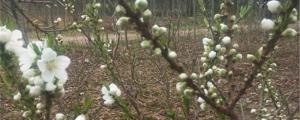How to Plant Palm Trees in Georgia
Many people might not associate palm trees with Georgia, but with the right care and attention, palm trees can thrive in this state. Planting palm trees in Georgia requires proper planning, preparation, and maintenance. Here is a step-by-step guide on how to plant palm trees in Georgia.
Step 1: Choose the Right Palm Tree
The first step to planting palm trees in Georgia is to select the right palm species that can thrive in the local climate. Some of the best palm trees for Georgia include the Windmill Palm, Needle Palm, and Saw Palmetto. These palm trees are cold hardy and can withstand the occasional frost in Georgia. Make sure to research the palm species and their specific needs before purchasing them from a local nursery.
Step 2: Pick a Good Planting Site
Palm trees require plenty of sun, so pick a planting site that receives at least six hours of direct sunlight daily. It is also essential to select a well-drained site, as palm trees do not grow well in areas that are often waterlogged. Avoid planting palm trees in low-lying areas or sites that are prone to flooding.
Step 3: Prepare the Soil
Before planting, prepare the soil to ensure that it is fertile and well-drained. Palm trees require soil that is rich in organic matter and drains well. You can amend the soil by adding compost or sand to improve drainage and enhance soil fertility. A soil test can also help determine whether the soil is suitable for planting palm trees.
Step 4: Plant the Palm Tree
Now it is time to plant the palm tree. Dig a hole about twice as wide and deep as the root ball. Place the palm tree in the hole, backfill with soil, and tamp the soil down firmly around the tree. Keep the soil level with the surrounding ground and water the tree after planting.
Step 5: Maintain the Palm Tree
Maintaining the palm tree is crucial to its growth and health. Palm trees require regular watering, especially during the hot and dry months of summer. It is also recommended to fertilize palm trees every 4-6 months with a slow-release fertilizer. However, avoid fertilizing during the winter months when the palm trees are dormant. Prune any dead or yellowing fronds, and avoid removing green fronds, as this can harm the tree.
Conclusion
Planting palm trees in Georgia requires attention to detail and proper maintenance. By selecting the right palm species, choosing a suitable planting site, preparing the soil, and properly maintaining the tree, you can successfully grow a beautiful palm tree in Georgia's climate.

 how many times do yo...
how many times do yo... how many planted tre...
how many planted tre... how many pine trees ...
how many pine trees ... how many pecan trees...
how many pecan trees... how many plants comp...
how many plants comp... how many plants can ...
how many plants can ... how many plants and ...
how many plants and ... how many pepper plan...
how many pepper plan...






























